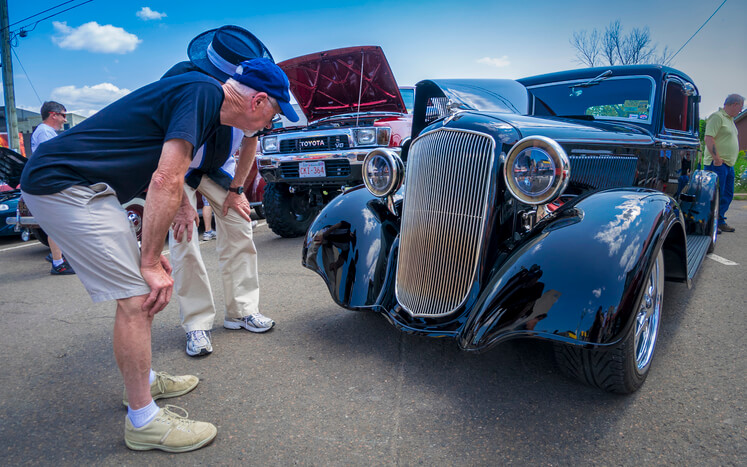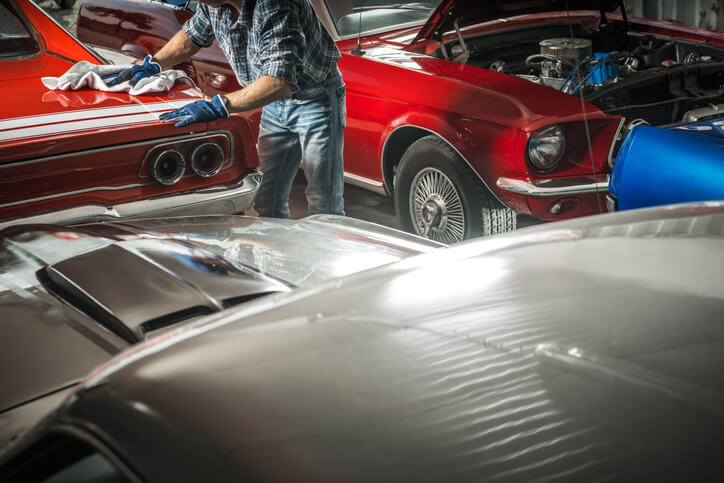Considering Automotive Technology Training? Learn How Some Companies Are Bringing Cutting-Edge EV Tech to Classic Cars
As the world accelerates towards a more sustainable future, a fascinating new trend is taking place, blending classic cars’ nostalgic allure with modern technology’s innovative thrust. This fusion is most prominently seen in companies specialized in restomodding, where the timeless beauty of vintage automobiles is being reimagined through the lens of cutting-edge electric vehicle (EV) technology.
As we stand at the cusp of an automotive revolution, the significance of this trend extends beyond mere aesthetic appeal; it symbolizes a more profound shift in the industry and offers a new frontier for those considering automotive technology training.
The Intersection of Classic Charm and Modern Technology
With their timeless designs and nostalgic appeal, classic cars have always held a special place in the hearts of automotive enthusiasts. However, these vintage beauties often have limitations such as inefficient fuel consumption, high emissions, and outdated mechanical components. This is where the integration of modern EV technology comes into play. Companies specializing in automotive restorations have started to retrofit classic cars with electric powertrains, effectively transforming them into eco-friendly vehicles that still retain their vintage charm.
Restomod, a term derived from “restoration” and “modification,” is pivotal in electrifying classic cars. This concept goes beyond simple restoration, which aims to return a vehicle to its original condition. Restomod, on the other hand, involves updating a classic car to accommodate modern components and technology while preserving its historical aesthetic. The result is a classic car that retains its original charm but is propelled by clean, efficient, high-performing electric power.
Restomodding allows for the blending of timeless designs with contemporary performance and convenience. In the case of electric vehicle conversion, this means installing modern electric motors and battery systems instead of traditional petrol engines. It often includes upgrading braking systems, suspension, and interior features to modern standards. The goal is to create a vehicle that maintains the classic look and feel but performs like a modern car in terms of efficiency, safety, and driving experience.

The process of restomodding is intricate and requires a deep understanding of old and new automotive technologies. Technicians with automotive technology training must be able to assess which modern updates are feasible and how they can be implemented without disrupting the car’s original character.
This involves a careful balance between preserving the historical aspects of the vehicle and integrating contemporary enhancements. For example, while adding an electric motor, the restomod process might also involve redesigning the car’s chassis to accommodate the weight and structure of the battery pack, ensuring that the car’s handling and aesthetics are not compromised.
Benefits and Challenges of Electrifying Classic Cars After Automotive Technology Training
The benefits of converting classic cars to electric vehicles are numerous. The most significant benefit is the reduction in environmental impact. While aesthetically pleasing, classic cars are often more environmentally inefficient than modern vehicles. These vehicles become zero-emission transports by replacing their internal combustion engines with electric powertrains.
Electric motors can significantly improve the performance of classic cars. Unlike traditional engines, electric motors deliver instant torque, providing quicker acceleration and a more responsive driving experience. This enhancement allows classic car enthusiasts to enjoy a more dynamic and modern driving experience without compromising the vehicle’s classic appeal.
Classic cars with modern upgrades, including electric powertrains, often see an increase in their market value. Combining classic aesthetics with modern technology and performance makes these vehicles highly desirable to collectors and enthusiasts and a marvel to maintain by professionals in specialized auto careers.

However, while the concept is straightforward, the execution is anything but. Retrofitting a classic car with EV technology presents unique challenges. The first hurdle is integrating modern technology into a chassis never designed for it. This requires not only mechanical ingenuity but also a deep understanding of both old and new automotive technologies.
Battery placement is a critical issue. Unlike purpose-built EVs, where the battery is often part of the car’s structure, classic cars need a bespoke solution to house the battery without compromising the car’s integrity or aesthetics. Companies are getting creative, with some placing batteries in spaces initially occupied by the fuel tank or engine.
Additionally, another challenge is maintaining the character of the classic car. Enthusiasts often value the unique driving experience and aesthetics of vintage models, so retaining these elements is crucial while upgrading the vehicle. Companies are increasingly focusing on custom solutions that respect each car’s original design and driving characteristics.
Are you interested in our automotive school?
Contact ATC Cambridge for more information.


